tekno.mage
Established Member
Hi everyone, been playing with my thread-cutting jig and made some boxes with threaded lids...
First, some from native timbers in Hawthorn, yew & hazel.
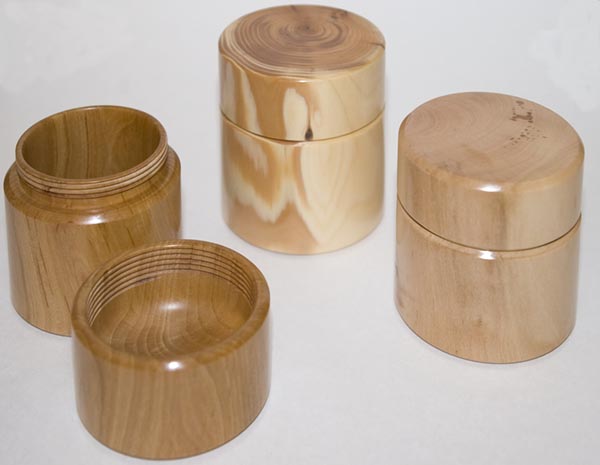
Next some decorated with gilt cream in rings on the lids in damson, purpleheart and gonco alves
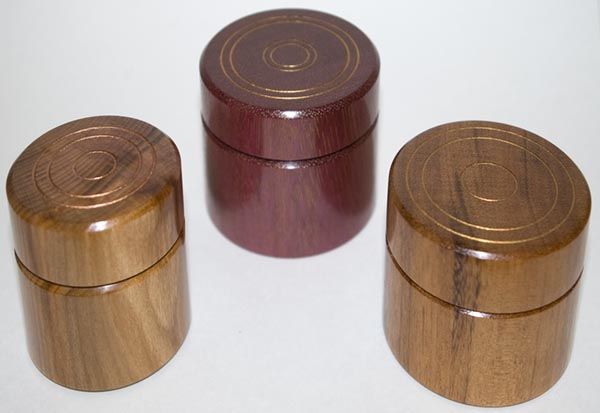
Then I got out the epoxy and metal powders and added coloured rings to the lids These are in paduak, hawthorn and anjan
These are in paduak, hawthorn and anjan
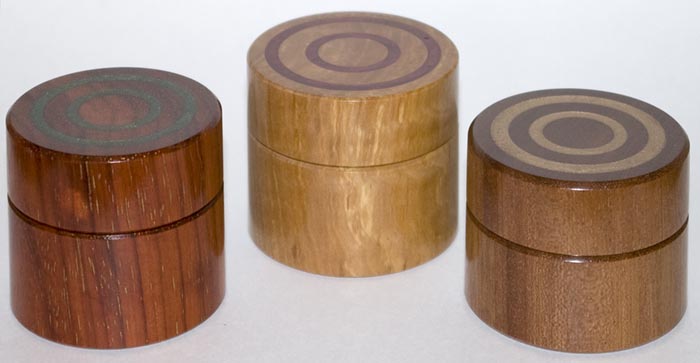
Then a couple or larger ones in some amazing pieces of hedgerow hawthorn -
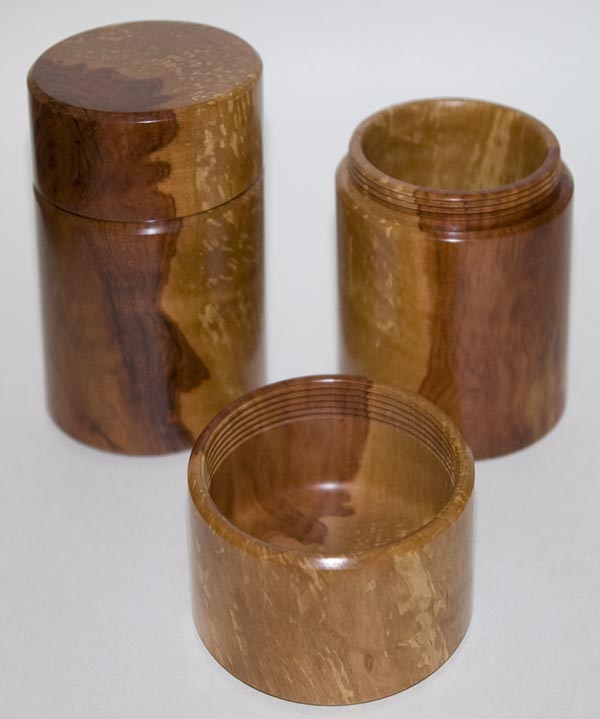
And finally, a couple in a completely different style using up offcuts of different woods. The larger one is anjan with purpleheart and the smaller is pale zebrano with darker zebrano. I'd like to develop this style so both top & base are threaded - but for these experiments, there wasn't enough wood in the offcuts I used so the bases are glued on.
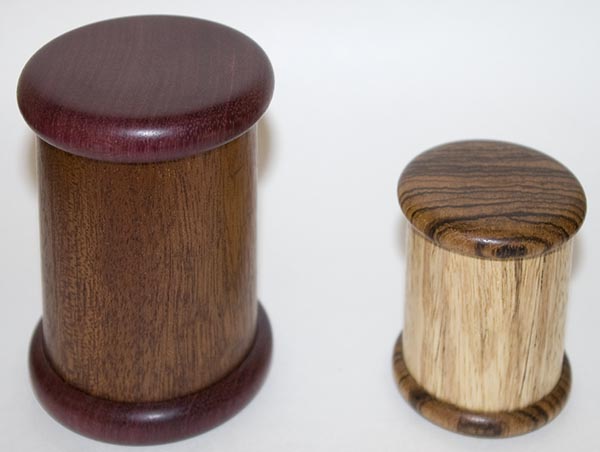
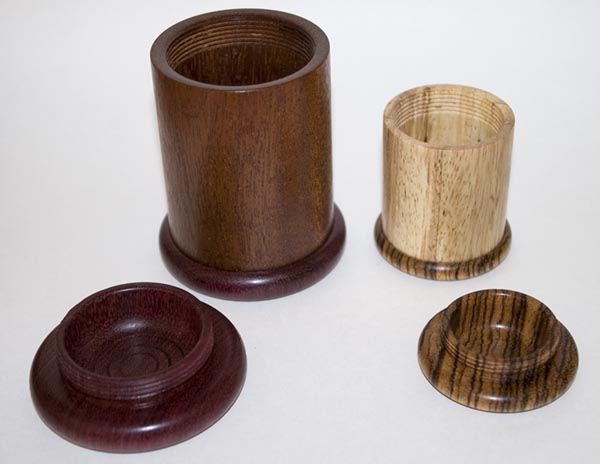
They are all finished in Osmo oil and Renaissance wax. All but the last two had the oil coats buffed using the Chestnut system.
Your comments would be welcome.
tekno.mage
First, some from native timbers in Hawthorn, yew & hazel.

Next some decorated with gilt cream in rings on the lids in damson, purpleheart and gonco alves

Then I got out the epoxy and metal powders and added coloured rings to the lids

Then a couple or larger ones in some amazing pieces of hedgerow hawthorn -

And finally, a couple in a completely different style using up offcuts of different woods. The larger one is anjan with purpleheart and the smaller is pale zebrano with darker zebrano. I'd like to develop this style so both top & base are threaded - but for these experiments, there wasn't enough wood in the offcuts I used so the bases are glued on.


They are all finished in Osmo oil and Renaissance wax. All but the last two had the oil coats buffed using the Chestnut system.
Your comments would be welcome.
tekno.mage
































